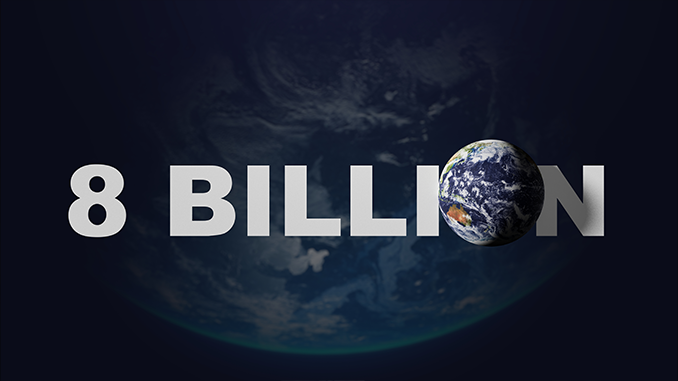Physical Address
304 North Cardinal St.
Dorchester Center, MA 02124
Physical Address
304 North Cardinal St.
Dorchester Center, MA 02124
With Michael Walker
With Michael Walker

Food For Thought….

Did you know that around 362,000 people are born every single day? And that on the same day, roughly 170,000 people die? That means, mathematically speaking, the global population increases by almost 192,000 people every 24 hours. That’s nearly 70 million new humans added to the planet each year. You could say this world is growing by a small country annually.
Now here’s where it gets interesting. Let’s imagine a scenario many of us have heard: the biblical account of the flood. Just eight people step off the ark—Noah, his wife, their three sons, and their sons’ wives. From there, civilization restarts. Creationists who adhere to a young-earth timeline estimate this happened about 4,400 years ago. So, here’s the simple thought: starting with just eight people, could we reasonably get to eight billion people today?
Using real-world data and modest growth assumptions, the answer is yes. Even with the constant churn of life and death, the numbers hold up. Over thousands of years, as long as births consistently outpace deaths, the math works itself out. Not only does it work, but with compounding population growth—even at very low rates—you don’t need a miracle to get from eight to eight billion. You just need time, reproduction, and survival. It’s not magic. It’s multiplication.
Now for a different thought. Let’s look at it from a secular scientific standpoint. Most anthropologists estimate that anatomically modern humans (homo sapiens) have existed for about 300,000 years. And while that number is presented as a scientific consensus, it’s really a best guess based on fossil dating and genetic modeling. But here’s the fun question: if mankind really had that much time—three hundred thousand years of existence—even at a snail’s pace of population growth, how many people should there be by now?
Well, let’s crunch the same math we used for the creationist timeline. Start with just two humans, a 0.01% growth rate (ultra-conservative), and let the years roll forward. You’d end up with over 40 trillion people. And that’s with one of the lowest growth rates in human history. If we use slightly higher rates, closer to what we’ve seen since the Industrial Revolution, the numbers explode into fantasy—into figures that exceed the number of atoms on Earth. No exaggeration.
So here’s the question: where is everyone? Where are the mass graves of trillions of ancestors? Where are the ruins of endless cities, villages, cultures, and civilizations that would’ve risen and fallen across the continents? Why does written history only go back 5,000 years, and agriculture just 10,000 years? Where did all that time go?
It’s like stepping into a movie theater that’s been playing for five hours, but somehow the popcorn is still fresh, the floor is still clean, and no one’s in your seat. Something doesn’t add up. The timeline is too long for the evidence we see. It’s not that we’re disproving anything. We’re just asking questions, running the numbers, and looking around.
Maybe it’s not that the world is overpopulated. Maybe it’s underpopulated—if humanity really has been here for hundreds of thousands of years. Maybe the world isn’t overcrowded. Maybe it’s actually quite young.
Because here’s another fun fact: in a perfect world, where human beings multiplied for 300,000 years, we wouldn’t have room to stand. But in this world—the one we actually live in—we have deserts, tundras, forests, oceans, and thousands of miles of open space. Not to mention the fact that we still lose people daily to famine, war, and disease. So it’s clearly not a perfect world… but it’s also clearly not a crowded one.
Just something to think about.
After all, we’re not proving anything.
We’re just doing the math.